Resurfacing your courts
What to think about
There are a wide range of options for you to consider when renewing your tennis courts and we appreciate it can be confusing. As a first step our recommendation is to contact your regional tennis association or club support at Tennis New Zealand.
Remember that your courts will be your most expensive and most utilsed asset(s). It is imperative that you do everything you can to preserve and maintain the integrity of your courts. We also recommend that you create in an asset plan incorporating all your assets. This facilities management toolkit resource has templates to allow you to do this, along with the option to seek the support of an independent facilities management consultant should you wish.
Before you start look at the condition of your courts and consider whether they need replacing or not. Many courts may just require some tender loving care and need some maintenance.
- Astroturf courts may just need a good groom with a moss and mould programme
- Hard courts may just need a good wash with a recommended chemical application
Then ask yourselves early, what is important to your club? Here are some ideas:
- we want to grow our junior membership
- we want to be competitive at interclub
- we want to be able to host tournaments and events
- we want our coach(es) to have quality courts to coach on
- we want our players to have quality courts to play on and develop their game
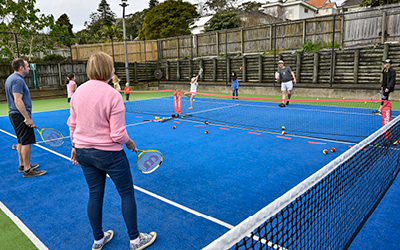
The information in the table below will help to narrow your options and assist at the start of your resurfacing project. Access an editable version of the table below HERE.
|
Questions to consider |
Type/amount/considerations |
|
How old are your existing courts |
e.g. 12 |
|
What type of surface are your existing courts? |
e.g. Astroturf |
|
How many courts do you have? |
e.g. 8 |
|
How many courts do you wish to resurface? |
e.g. 4 or 8 |
|
Would you like to stay the same or consider options? |
e.g. options |
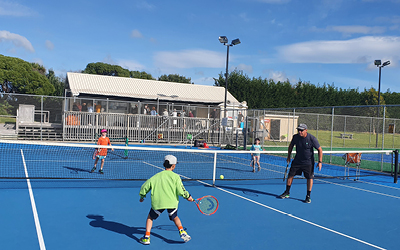
Use the box on the left to tick all that apply: Example X in table below, please access an editable version for club use HERE.
|
X |
a court surface that drains well so we can play soon after rain has stopped |
|
|
a court surface that is easy to look after and affordable to maintain |
|
|
a court surface that is affordable to install |
|
|
a court surface that represents good value for money |
|
|
a court surface that won't crack and will last a long time before we have to renew it |
|
|
a court surface that will be kind to our bodies |
|
|
a court surface that will help develop our players |
|
|
a court surface that will benefit our coaches |
|
|
a court surface so we can host tournaments and events |
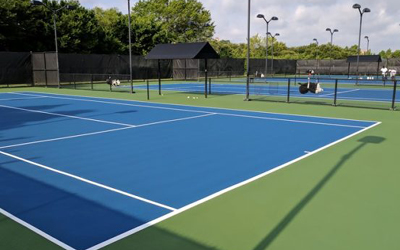
Now we can match the checklist under choosing the right surface with some general court surface comparisons. The range of choices you have is quite large, so we do recommend you work to a plan and budget.
Key features of the most common types of court surface are shown below:
|
|
Artificial Grass Courts |
Acrylic hard Courts |
Acrylic Cushioned Courts |
|
Install |
cost effective to install can be installed over the top of existing courts relatively short life cycle with replacement expected after 10 - 15 years |
cost effective to install can be installed over the top of existing courts relatively short life cycle with replacement or resurfacing expected between 5 - 15 years |
higher capital outlay required to install can be installed over the top of existing courts cushion system moves with the base layer preventing surface cracking relatively long life cycle with replacement or resurfacing expected between 15 - 30 years |
|
Maintain |
prone to moss and mold build up prone to sand piling or clumping can be costly to maintain requires more regular than annual maintenance |
prone to surface cracking prone to surface dirt and grime build up cost effective to maintain requires annual maintenance |
prone to surface dirt and grime build up cost effective to maintain requires annual maintenance |
|
Play |
ball bounce plays low and 'skids' considered a 'medium paced' playing surface can play soon after rain stops court surface can be slippery due to sand considered 'kind' on muscles and joints |
ball bounce is plays regular and high considered a 'fast paced' playing surface court surface can slippery if not dry considered 'tough' on muscles and joints |
ball bounce plays high considered a 'slow paced' playing surface court surface can slippery if not dry considered 'kind' on muscles and joints |
Determining your budget and forecasting long term costs will help you understand your options before contacting a provider.
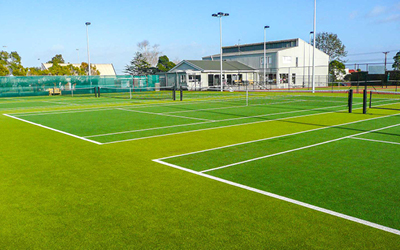
There are three generic types of artificial grass: long, medium, and short pile. Typically for tennis a sand-filled medium or short pile yarn is used, which varies in height from 15mm to 10mm. The density/length of yarn and amount of sand fill will determine the speed or play and bounce characteristics. In recent years new, non-sand filled piles have been introduced to the market.
How to look after the surface? Artificial Grass may be considered a low maintenance surface, however there is constant and ongoing up keep to look after this surface and ensure you get the life span anticipated. It is critical that
- the playing surface is kept scrupulously clean, to preserve its playing characteristics.
- the pile remains supported to prevent flattening leading to inconsistency in ball rebound, foot friction and poor drainage.
- the free drainage of surface water is maintained throughout the life of the court.
The tennis court should always look attractive and well-kept. These objectives are achieved by
- Regularly sweeping leaves and other detritus from the surface.
- Regularly weekly brushing to freshen the fibre surface, counteracting any slight sand drift or compaction and tendency to form an impervious skin on the sand surface that might impair drainage.
- Applying prophylactic treatments of moss killer and/or algaecide.
- Checking sand levels monthly.
Brushing
Brushing the surface is a crucial operation if premature loss of pile and deterioration in drainage is to be prevented. Apart from freshening the look of the surface the purpose of regular and reasonably vigorous brushing is to prevent the formation of a compacted and impervious skin on the top of the sand layer which will inhibit drainage and encourage moss and algae. Brushing by hand is basically ineffective and hard work. A selection of mechanical brushing machines is now available which will speed up and lighten the operation and these are recommended at tennis venues where there are several courts. The manufacturer or installer of the carpet should always be consulted on how to main the court and the machinery required. The use of a small mechanical tractor with weighted drag brush is strongly recommended for the best long-term performance.
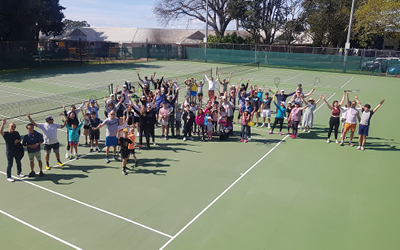
The information in this toolkit will give you a good 'first serve' to your court resurfacing project. As you can see it is not all about your personal preference for court surface.
Now is a good time to ask around. Informally ask a range of members what they think of your current courts. Then formally survey your members for their input for your court resurfacing project. You can do this by way of survey or any other format that officially records results. Also contact your region/association for their support in doing this.
Our Recommendations:
- Follow our simple 'getting started' process to help progress your initial thinking
- Provide options for court surfaces for your members and participants
- There are options to invest in an asset plan through Tennis NZ preferred Community Assets Advisor. Accessing professional advice can further help you to maintain your precious assets should you wish to invest in this area. (Application for funds to support this may be available through certain sources)
- Contact us for further information and to get some technical support. It's free to chat with us!
Now it's time to 'approach the net' to start narrowing down your options and get in position for a 'winning volley'.
Our information aligns to the technical specifications of the International Tennis Federation (ITF). For more detailed information on facility specifications see here





























